Fall protection systems for rope access work: a technical guide to façade access
From selecting the right anchors to managing architectural obstacles: everything you need for rope access work while respecting regulations and the building
Why rope access requires tailor-made solutions
Rope access is now one of the most widely used techniques for façade maintenance, inspection of vertical surfaces and installations at height. Thanks to the speed and agility of this solution – even without scaffolding or mobile platforms – it allows for precise work even in architecturally sensitive settings or in the presence of complex geometries.
However, the versatility of rope access work does not equate to simplicity.
On the contrary, rope access is among the most delicate activities and demands high-level training along with carefully designed fall protection solutions, which must ensure safety, structural compatibility and full compliance with current regulations.
The risk isn’t just falling – it's falling without the fall protection system responding correctly. Whether an inadequate anchor point, poorly calculated rope path or unergonomic harness, every error becomes a threat to both worker safety and company liability. That’s why careful design is essential – one that accounts for the existing structure and the real-world behaviour of the devices.
What regulations govern fall protection anchors for rope access work?
The key technical standard for fall protection anchor devices is EN 795, which defines five types based on configuration: A (fixed), B (temporary), C (flexible lines), D (rigid lines) and E (weighted devices).
CEN/TS 16415 extends these requirements to multi-user devices, while in Italy, UNI 11560 governs their design and installation on buildings.
For rope access, these regulatory references are only the starting point. Real safety also depends on dynamic factors: load direction, support strength, compatibility of PPE and the presence of fixed obstacles. Moreover, products must be accompanied by safety analysis reports that document actual compliance with all project-specified conditions, in addition to periodic inspections that certify ongoing conformity.
In the operational context, a rescue and recovery plan must be in place to clearly define emergency procedures.
This requires in-depth knowledge of the devices’ mechanical properties, verification of rope paths and an understanding of how they interact with the surrounding environment.
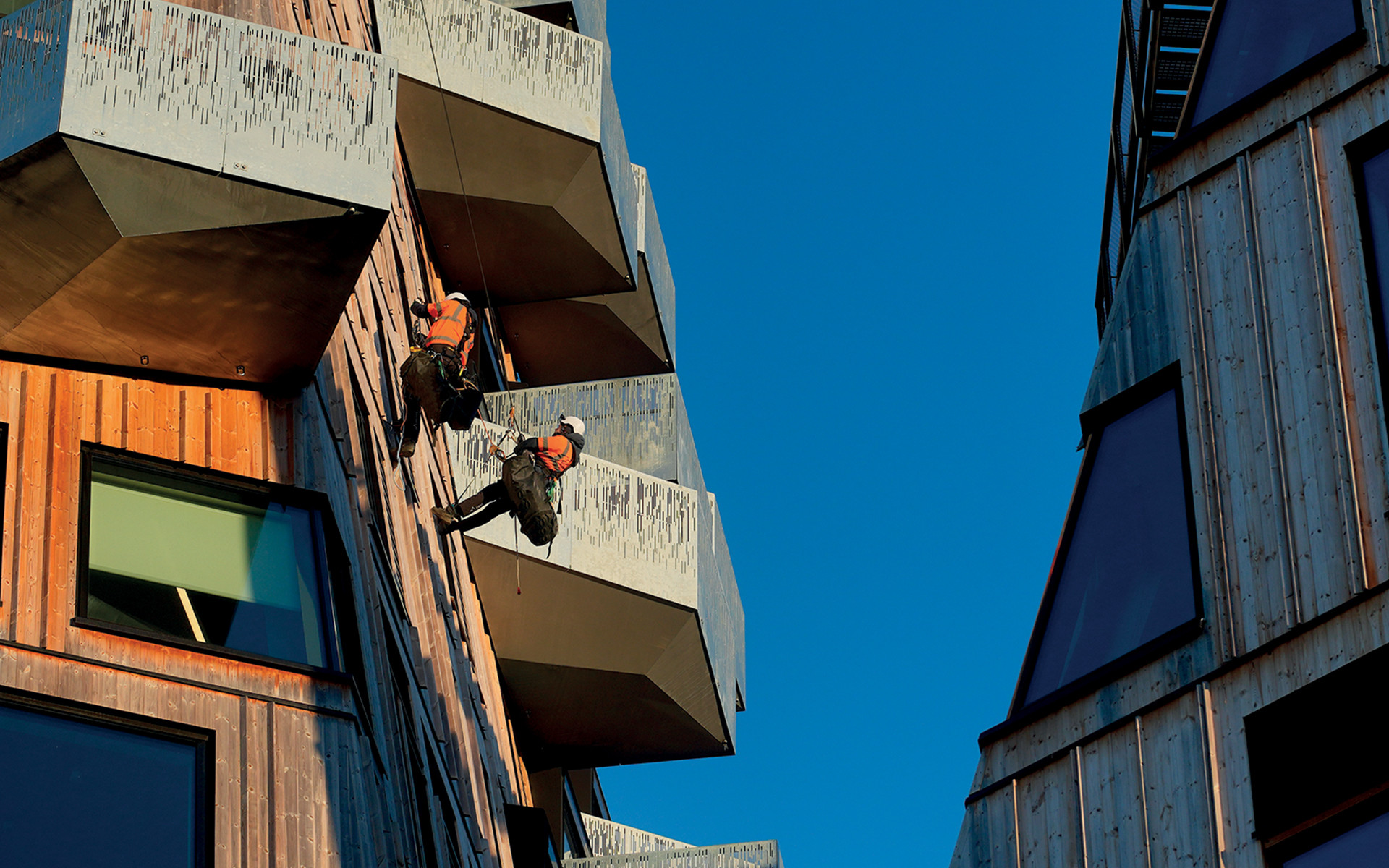
The real risks for rope access technicians
Anyone who works at height knows: there’s no room for error. Every component must be designed, certified and installed with precision. Among the most common risks:
Anchor points on untested supports
Pendulum swings due to poorly calculated diversions
Inadequate clearance during a fall arrest
Lack of protection against falling objects
Added to these are often adverse environmental conditions: wind, rain, slippery surfaces and architectural obstacles.
The only way to prevent accidents is through meticulous planning – from selecting the right devices to ensuring compatibility with the façade’s materials and geometry.
Operator training is also essential. Rope access is not an improvised technique: it requires specific training, knowledge of standards, practice with rescue systems and mastery of fall dynamics. It is not enough to simply purchase a certified harness: it is essential to know when and how to use it, and under what conditions (for example, a flawed connection) it may risk being ineffective.
How to ensure safety during façade access
Ensuring safety starts with choosing devices specifically engineered for rope access work. The WING anchor point is certified according to EN 795 Type A and CEN/TS 16415. It is designed for both rope access work (1 operator) and fall arrest (up to 3 operators). Compact and versatile, it can be installed on timber, concrete and steel, including in vertical configurations.
When a longer route needs to be followed along the façade, H-RAIL is the ideal solution: a rigid rail system that allows uninterrupted movement without disconnection. It can be installed on walls, ceilings or floors, and its modular design allows for both straight and curved configurations. The sliding devices ensure maximum smoothness.
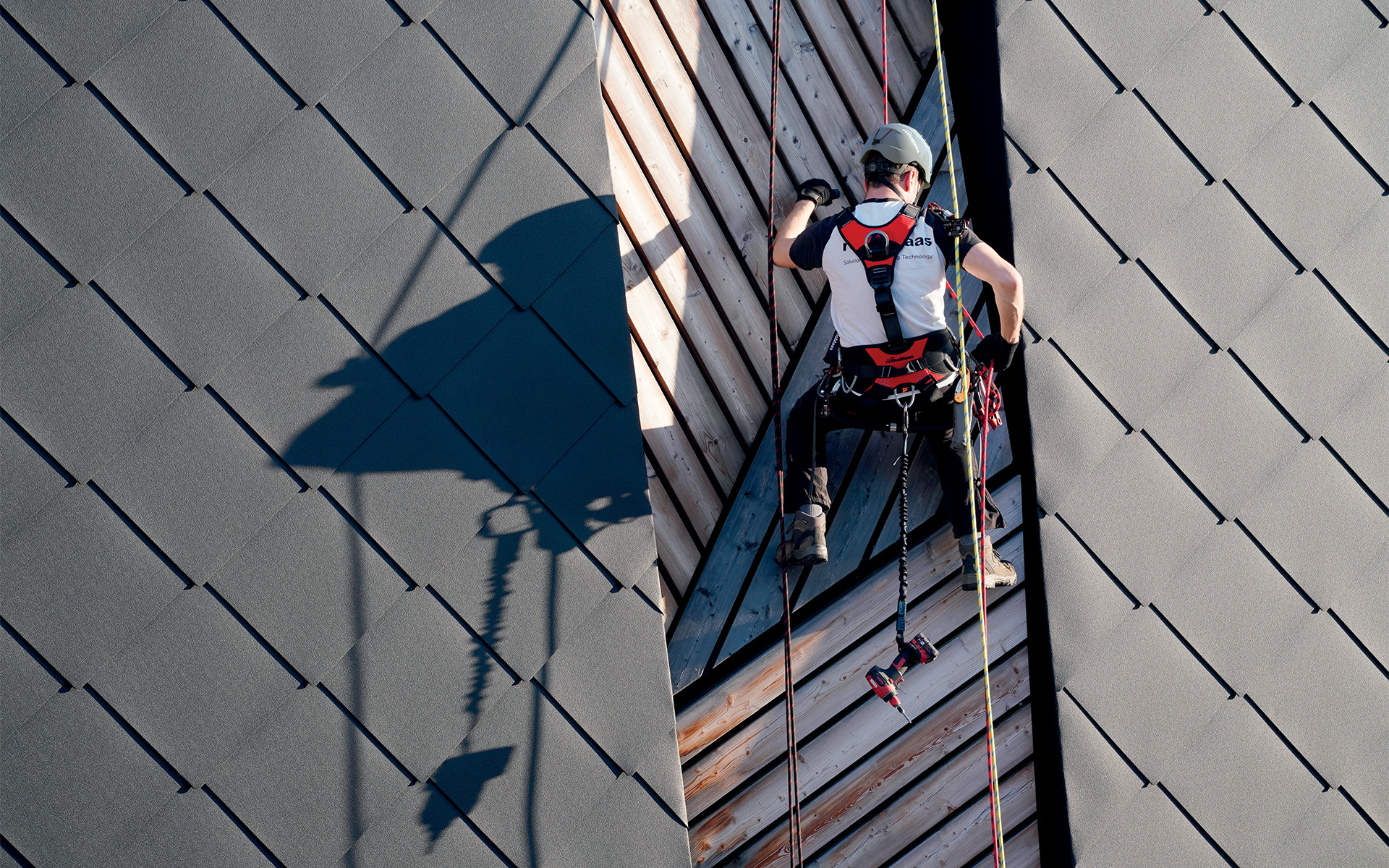
PPE and operational comfort: choosing the right equipment
Rope access technicians need to wear PPE for numerous hours on end. Comfort and safety go hand in hand. The OLYMPIA harness is designed with this in mind: five attachment points, an ergonomic waist belt, adjustable supports and an off-centred ventral ascender attachment to prevent interference.
This configuration enables suspension, positioning, fall arrest and restraint, all using a single device.
For head protection, the PROTECTOR helmet offers both durability and comfort: an ABS shell, lightweight design (385 g), ratchet adjustment system and compatibility with visor and ear protection. The washable internal padding improves hygiene, while the safety chinstrap opens only under controlled impact conditions.
Overcoming architectural obstacles: the role of accessories
Façades are never flat or uniform. Cornices, railings, overhangs and structural obstacles all require diversion solutions. The C-LEVER system allows the rope path to be redirected, preventing pendulum effects and facilitating movement. Adjustable and quick to install or remove, it is also suitable for complex environments. SOLID was developed for the same purpose: a high-stiffness, high-strength support that, when combined with the jaw-plate anchor system, enables rope access work to be carried out in both comfort and safety. With a support height ranging between 400 and 1000 mm, it adapts to different roof assembly thicknesses.
Falling tools pose a danger, too. TOOLGRAB devices allow tools such as spanners, drills and other equipment to be safely secured. They integrate seamlessly with Rothoblaas PPE without interfering with work, reducing the risk to both operators and passersby.
Scheduled system maintenance and the importance of regular inspections
Every fall protection system must undergo regular checks. Environmental conditions, wear and operational loads all affect performance. Operators must follow documented maintenance procedures, carried out by qualified technicians, with up-to-date records. Safety doesn’t end with installation.
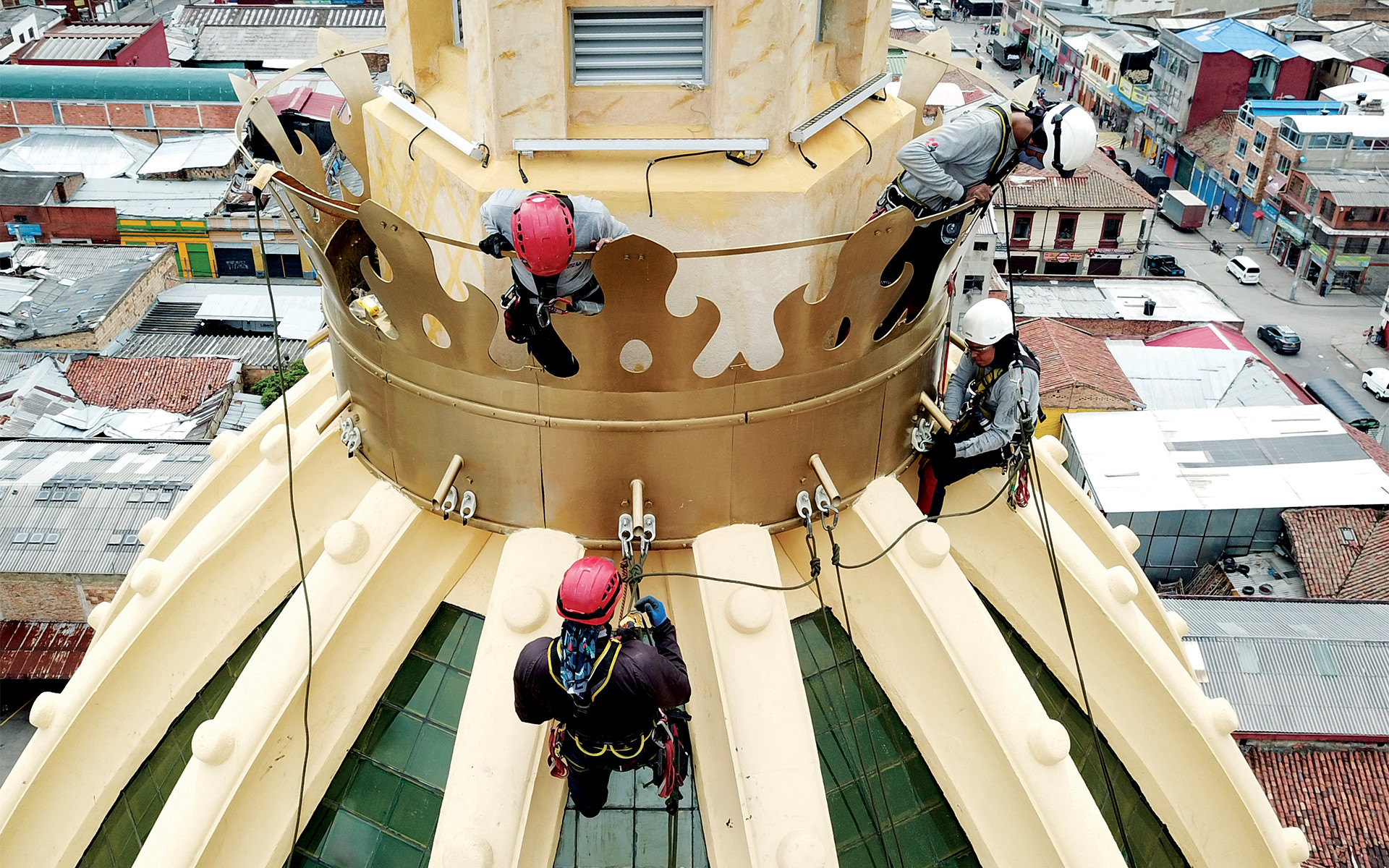
Integrated design: aligning architecture with safety at height
Integrating fall protection devices into architectural planning is a forward-thinking technical choice. It allows the most suitable elements to be selected from the outset based on the building’s structure, the planned methods of access and periodic maintenance needs.
For example, integrating the H-RAIL system into a continuous façade ensures uninterrupted accessibility, even in complex configurations. Similarly, WING anchor points can be incorporated during the structural phase, simplifying future installation and reducing overall costs.
Rothoblaas Solutions for Safety supports rope access technicians at every stage – from developing specialist products to identifying critical points in a project, and providing complete technical documentation for each device, including installation videos and inspection records.
With Rothoblaas, you can plan your rope and façade access with certified devices, tested in our Gravity Lab and backed by third-party international certification — all without involving multiple suppliers.
Safety starts with design. Upload yours by selecting fall protection systems here: https://www.rothoblaas.com/technical-support
All rights reserved

